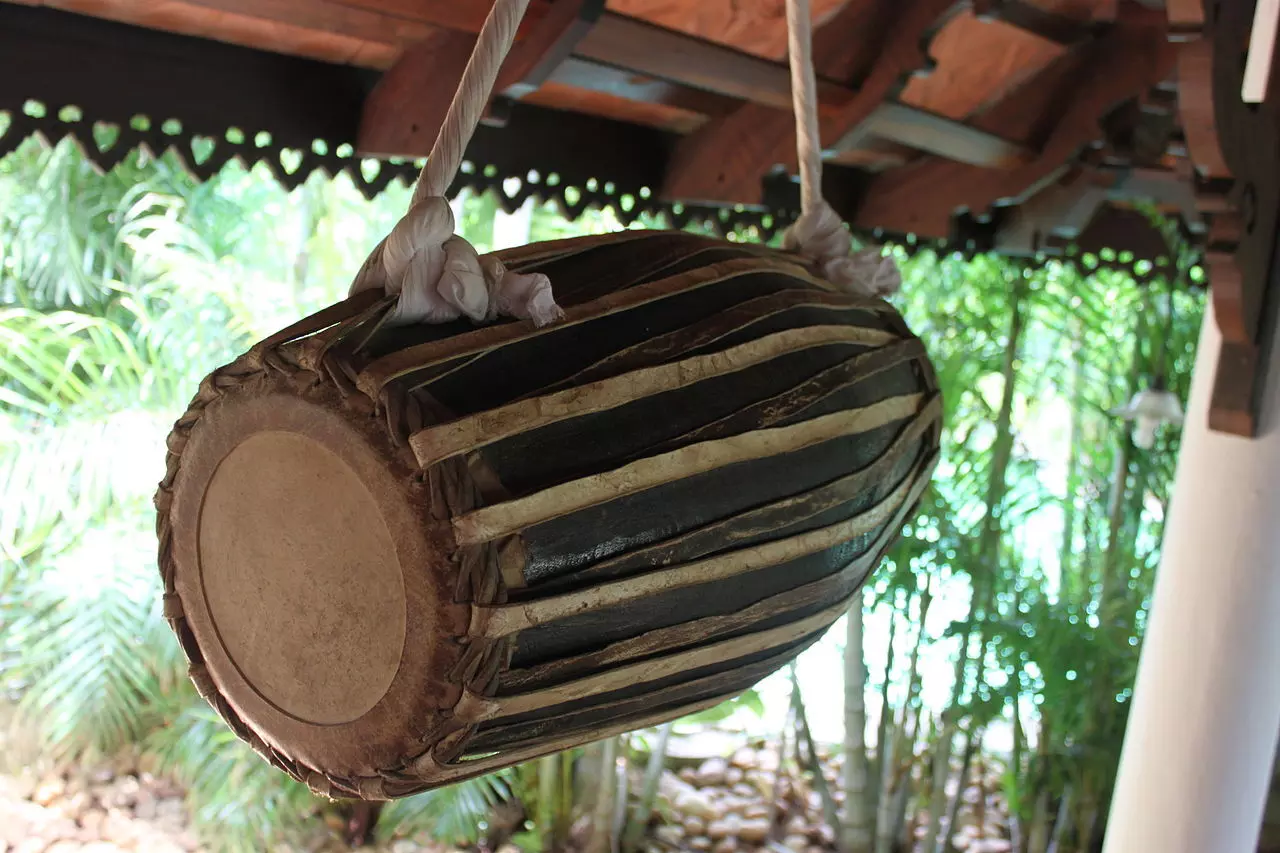Drum, divinity and Shiva’s dance
Made from the wood of jackfruit tree, Maddalam or Shiva’s Drum, a 13th century wooden-leather craft that still thrives in the hamlets of Kerala’s Palakkad District, is in need of market support and recognition for the craftsmen

Dating back to the 13th century, Maddalam has been regarded as a divine instrument or ‘Deva Vadya’ on account of its association with the ‘cosmic dance of Shiva’. Very similar to mridangam, this classical drum is a part of the Panchavadyam, an ensemble of five percussion instruments traditionally associated with temple festivals in Kerala — the other four being Idakka, Timila, Kombu and Elathalam, along with the two auxiliaries, Sankku (conch) and Kuzhal.
Chiselled out of a single piece of a jackfruit stem, Maddalam (also called Madhalam) is an elongated drum hollow, the ends of which are tightly strapped with a combination of cow and buffalo leather to create the required percussion impact. While the cow hide is used for the inner ring, the outer ring has buffalo leather. At the centre of the right end is a permanent spot of black paste which helps the drummer create special tones for temple art forms like Kathakali, Mohiniattam and Keli in God’s own country. There are two varieties of Maddalam — Suddha Maddalam and Toppi Maddalam; the former is tied around the waist of the drummer with a cloth while the latter is a smaller version suspended from the neck.
The selected log is cut into the required size and chiselled out using hand tools like valchu uli (bent chisel), vattavayan uli (chisel with a curved end), irumbu kotti (Iron tools used for hitting, used like a hammer), kai eda tharan uli (special shaped chisels) and a kodil (plier). After selecting the appropriate leather, it is scraped with a valkathi (used for scraping the surface of the leather). Holes are made and widened by using two kinds of tiruli — one with a pointed tip for piercing, and another blunt one for widening the existing hole. Finally, we have the koluthu & kacha (hook and cloth tied around the waist used for tightening the leather braces).
The process is best described in the words of one of the leading exponents of the trade, Manikandan, who lives in the Peruvemba hamlet of Palakkad district, together with his extended clan of dexterous craftsmen who produce a range of musical instruments for Carnatic music – including Maddalam, as well as the more well-known mridangam, used by the percussion maestros.
In an interview with Susheela Nair, who took a detour of 15 km from the customary tourist itinerary to Palakkad to meet him, he said: “The Maddalam is made from the wood of jackfruit tree. It is a complex process that starts with the selection of wood. The wood is dried for a month and then chiselled in a machine to make it hollow.” This is followed by purchase of hides of cows and buffaloes from the abattoirs. “The skins are further chopped into lengthy pieces and tied to both ends of the instrument. The makers tie the central segment of the instrument with a cow skin supported by a buffalo skin. The two pieces are cut to cover the mouth of the hollow log and the rest is cut into long strap-like pieces that are used to tighten the cover.” Nair describes this as “a vigorous process in which the makers have to apply all the strength of their arms and legs to get the right tension of the instrument”. This is the real test, for both sides of the Maddalam are expected to have their own unique sound. The leather covering of the Maddalam, having a wider aperture, is made out of a paste of black stone, cooked rice and kunnikuru, a special seed. It is applied to the centre of the left membrane which gives it a powerful resonating bass sound.
The biggest challenge today to the craft is the declining quality of the leather hides. Cattle no longer graze in the open and, as most of them are stall-fed, there is a thick layer of fat and cholesterol beneath their skins, which affects the quality of the sound. The unseasonal showers also affect the quality of the skin when Maddalam is still in the process of making.
While the GI tag, and the establishment of Thukal Vadyopakarna Nirmana Sangam with support of Vision India Charitable Trust to preserve this great traditional craft, have ensured access to funds, technologies and markets through NABARD’s cluster development programme have given hope and raised the aspirations. The fact is that the craftsmen are still at the low end of the value chain.
However, as Nair puts it: “While the cultural sphere of the state is vibrant with rhythmic ensembles and percussion artists, the traditional craftsmen, who slog round the year to make the instruments ready for performance before every festival season, go unhonoured and unsung”.
It is true that the Department of Posts has brought out a stamp to acknowledge this unique art form, but if the art form has to be truly acknowledged and strengthened, it is high time that a comprehensive market support programme is offered to the adherents of this art form which is finding it difficult to retain the interest of the younger generation in preserving this tradition of their forebears.
The writer superannuated as the Director of the LBSNAA after 36 years in the IAS. He is currently a historian and policy analyst.



